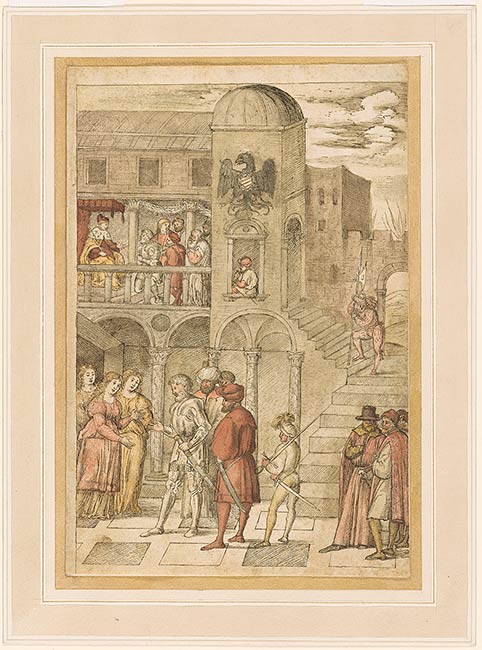
The drawing consists of two consecutive narrative scenes: above a knight kneels before a Doge seated under a dais in a palatial interior, possibly before setting out on a mission such as a crusade; below he is shown taking his leave from a lady, probably his wife, or greeting her upon his return.
The dress and style of the figures accord well with the art of the Venetian terrafirma during the sixteenth century, though it is possible that the drawing was created much later and is intentionally archaic. The discrepancies in size between the figures suggest that it may be a later pastiche of earlier models.
The influence of the Venetian school and of Girolamo Romanino (ca. 1484-ca. 1560) and Marcello Fogolino (ca. 1483/1488-after 1548) is apparent; the drawing was acquired as by an anonymous artist from Verona. The drawing may be related to book illustration or a print. It has not been possible to identify the coat of arms on the tower which includes an eagle – the German imperial arms depicted for instance at Trento consist of the double-headed eagle.
Acquired as Italian school, Verona.
Inscribed on verso in graphite, "2227."
Watermark: Crossed arrows with six-pointed star above (cf. Briquet 6296).
Murray, Charles Fairfax, 1849-1919, former owner.
Morgan, J. Pierpont (John Pierpont), 1837-1913, former owner.
Morgan, J. P. (John Pierpont), 1867-1943, former owner.

